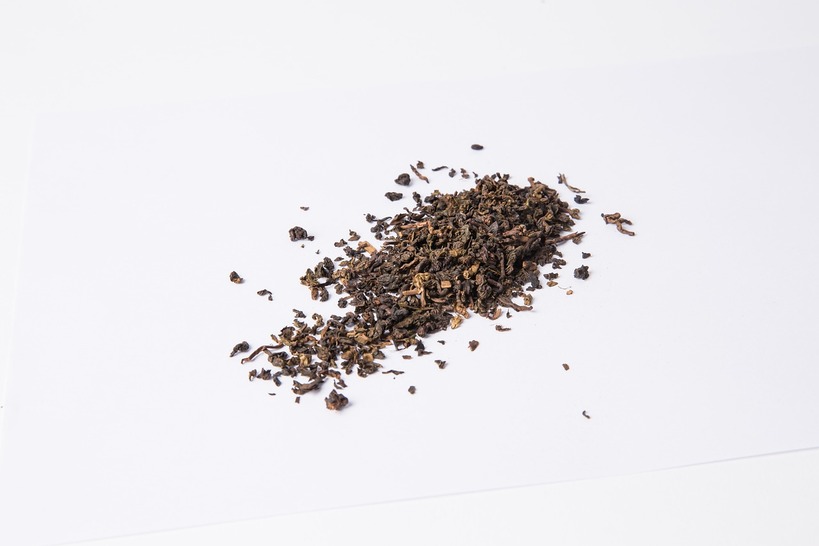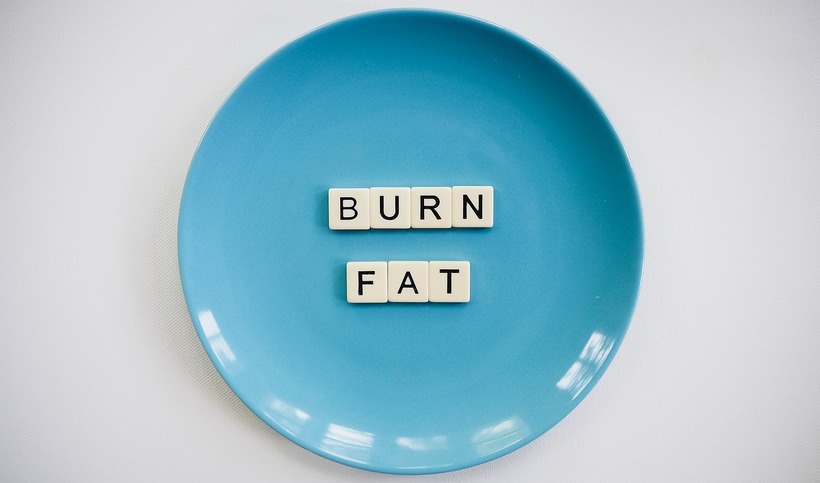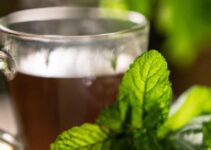Oolong tea – a traditional Chinese brew – has a unique flavor between green and black teas. A semi-oxidation process creates floral and fruity notes with a hint of earthiness.
Plus, it’s great for your health! It contains antioxidants to help boost immunity and prevent cell damage. It also has moderate caffeine for an energy boost without jitters, and regular drinking of oolong tea is linked to weight management and better digestion.
You can also pair oolong tea with food for a special dining experience. Its floral undertones go great with seafood. Its boldness is perfect for rich flavors like chocolate or cheese. Serve oolong tea at your next dinner party for a memorable twist.
Table of Contents
Importance of knowing when to drink oolong tea
Drinking oolong tea at the right time is key for unlocking its benefits. It has antioxidants and plant compounds that can help with digestion, weight loss, brain function, and reducing chronic illnesses.
For an energy boost in the morning, oolong is ideal. It can give you a surge of energy, but without the jitters of coffee. Also, drinking it before a workout helps with fat oxidation and endurance.
Also, drink oolong about 30 minutes after a meal. Its polyphenols stimulate digestive enzymes and improve gut health. Plus, its mild caffeine content aids intestinal motility, reducing bloating and sluggishness.
If you’re trying to manage your weight, drinking oolong between meals helps. Research shows it increases metabolism and fat burning because of its high catechins and caffeine. So, instead of unhealthy snacks, reach for oolong tea!
For the best flavor and revitalizing effects, steep oolong tea for five minutes at 195°F (90°C). This way, you can get the flavors you want, while preserving the nutrients.
What is oolong tea?
Oolong tea is a traditional Chinese beverage with a unique flavor. It’s partially oxidized, making it a perfect balance between green and black teas. It’s known for its delicious taste and its high antioxidant content.

Plus, there are lots of oolong varieties. Each one has a different flavor, aroma, and color. For example, Tie Guan Yin has a floral smell and smooth taste. Da Hong Pao has a rich, roasted flavor. Exploring these varieties is exciting for any tea-lover.
Did you know oolong has a magical history? According to legend, during the Qing Dynasty in China, a scholar found an abandoned tea plant. He brewed its leaves and loved its aroma and flavor. He named it “oolong” which means “black dragon” in Chinese. How enchanting!
Different types of oolong tea
Oolong tea has many varieties, each with its own special characteristics and flavors. Let us explore the amazing oolong tea world!
First, we have “Bai Hao” or White Tip Oolong tea. This type of oolong is popular for its delicate scent and smooth, sweet taste. It is produced in Taiwan from special tea cultivars and goes through a highly developed oxidation process.
Second is the Tie Guan Yin, also known as Iron Goddess of Mercy. This oolong tea comes from Fujian Province in China and has a long history going back to the Ming Dynasty. It is known for its floral aroma and orchid-like flavor notes.
Third is the Da Hong Pao or Big Red Robe oolong tea. This rare and much sought-after variety originates from Wuyi Mountain in China and has an intricate mix of earthy, mineral flavors. Its leaves are roasted to perfection to bring out its unique taste.
Fourth is Jin Xuan Milk Oolong tea. This Taiwanese oolong gets its name from its creamy feel and milky smell that remind of butter or caramel. Its one-of-a-kind flavor makes it a beloved choice among tea fans around the world.
Last is Dong Ding Oolong tea which hails from Taiwan’s central mountain region. It has a smooth mouthfeel and interesting notes of toasted nuts and honey. The classic roasting process brings out its exceptional scents.
To make the most of your oolong tea experience, here are some tips:
- Test brewing temperatures: Different types of oolongs need special water temperatures to bring out their best. In general, lighter oolongs do best with lower temperatures around 185-195°F (85-90°C), while dark ones work with higher temperatures around 200-212°F (95-100°C).
- Change up steeping time: Steeping time can seriously modify the flavor of oolong tea. Fragile oolongs should be steeped for 1-2 minutes, while stronger types can be steeped for 3-5 minutes.
- Enjoy multiple infusions: Oolong leaves are capable of producing multiple flavorful infusions. Re-steeping the leaves can reveal new flavors and nuances, so don’t be scared to explore the depths of your oolong by having several cups from a single batch.
By understanding the unique qualities of each type of oolong and following these tips, you can take your tea-drinking to a whole new level and savor the wonderful complexities that this extraordinary drink offers. Oolong tea has enough twists and turns to make a rollercoaster jealous!
How oolong tea is processed
Oolong tea has a special processing technique that brings out its distinct flavors and aromas. The procedure includes plucking the leaves, wilting them with natural sunlight or indoors, oxidizing them partially, and finally, roasting or firing them. This painstaking process gives tea its unique characteristics.
Here is an overview of oolong tea’s amazing transformation:
| Step | Description |
|---|---|
| 1. Plucking | Harvesters pick young tea leaves with accuracy and precision. |
| 2. Withering | The freshly picked leaves are left to wilt for a set time, allowing the excess moisture to evaporate. |
| 3. Oxidization | After wilting, the leaves are partially oxidized by bruising them or exposing to controlled atmospheric conditions. |
| 4. Firing/Roasting | The partially oxidized leaves are fired or roasted at different temperatures, to stop the oxidation process. |
Each step adds to the quality and flavor of oolong tea.
Moreover, during the oxidation stage, oolong teas can be grouped into light or dark, depending on their oxidation level. Light oolongs have slight floral and fruity notes, while dark oolongs have more robust flavors like roasted nuts or caramel.
One famous story about oolong tea is about a curious scholar in ancient China who found it accidentally. Taking shelter from rain, he plucked some leaves and stored them in his sleeve pocket without realizing it. When he opened his sleeve, he saw dried leaves with a lovely scent. He brewed them and tasted the delightful oolong tea. Such a happy accident continues to attract tea lovers around the world.
The careful processing methods plus such exciting stories make tea a beloved beverage. If oolong tea had a dating profile, it would say it’s a perfect harmony between black tea’s sultry character and green tea’s zen-like charm.
The taste and flavor profile of oolong tea
Oolong tea stands out from other types with its captivating taste and unique flavor profile. It has a complex yet sweet taste, usually with floral, fruity, and nutty notes. Its flavor is smooth and mellow, with an aftertaste that lingers pleasantly on the palate.
Depending on how it is brewed, the taste can be enhanced or diminished. An added bonus is that oolong tea can be enjoyed multiple times without losing its flavor complexity – making it a truly immersive experience. Hot or cold, it has something for everyone.
Studies have also shown that oolong tea contains polyphenols and antioxidants that may provide health benefits. These include boosting metabolism and aiding in weight management.
So why not try oolong tea? Its diverse array of flavors and potential health benefits make it a great choice for any tea lover. Plus, its caffeine content is just enough to wake you up, without making you question your life choices.
Caffeine content in oolong tea
Caffeine levels in teas vary widely. Let’s compare them using a table.
| Tea Type | Caffeine Content (per cup) |
| Black Tea | 40-70 mg |
| Green Tea | 20-45 mg |
| Oolong Tea | 30-50 mg |
| White Tea | 10-15 mg |
Data shows black tea has the most caffeine. Green tea has less, while oolong is in between. White tea has the least amount of caffeine.
Jason, a tea lover, switched from coffee to oolong. He liked the lower caffeine, and found it gave him energy without jitters or sleep disruption. He enjoyed oolong’s taste and benefits, while controlling his caffeine intake.
Be warned: Caffeine may give you special powers, like staying awake during dull meetings.ting more energetic after eating certain berries. He tried them himself and felt their effects.
How caffeine in oolong tea affects sleep patterns
Oolong tea contains caffeine, which can have an effect on your sleep. If you drink it in the late afternoon or evening, it can interfere with your natural sleep-wake cycle. To improve your sleep, limit tea consumption and try decaf or herbal teas.
Establish a regular sleep schedule and a relaxing environment, and avoid stimulating activities before bed. Try relaxation techniques like meditation or deep breathing to prepare for a restful sleep. Awareness of caffeine’s impact on sleep is key to good sleeping habits. With these tips, you can get the best night’s rest!
Health benefits of oolong tea
Oolong tea not only tastes great but also offers amazing health benefits! One of them is its ability to increase metabolism and help in losing weight. Let’s learn how it works!

- Oolong tea has polyphenols that activate enzymes which make the body break down fat cells.
- This leads to burning of more calories throughout the day.
- The caffeine content in tea stimulates your nervous system and increases fat burning, helping you lose weight.
- Regularly drinking this tea has been linked to reduced body fat percentage and waist size.
- It also regulates blood sugar levels, preventing sudden spikes or drops that might cause over-eating.
- Plus, it improves digestion by increasing enzyme production, which reduces bloating and improves gut health.
Apart from this, oolong tea also has other unique properties. It has antioxidants that protect the body from oxidative stress and reduce inflammation. This contributes to overall well-being and can support weight management.
To get the most out of oolong tea for boosting metabolism and weight loss, here are some tips:
- Have a cup of tea after meals – it will help in digesting food and make you feel full.
- Incorporate physical activity along with tea – it will increase the tea’s effects on metabolism and weight loss.
- Brew the tea correctly. Steep it for 3-5 minutes in hot water before drinking it, to get the maximum benefits.
Follow these suggestions for the best results! Oolong tea can really help in boosting metabolism and achieving your weight loss goals – it’s the secret to a healthier heart!
Promoting heart health
Oolong tea offers a range of benefits that support heart health. It can reduce LDL cholesterol, lower blood pressure, prevent plaque buildup, and even help regulate blood sugar levels.

It may also lower the risk of stroke and improve overall cardiovascular function. Studies have found that just two cups a day can reduce the risk of heart disease by up to 46%. So, get sipping to keep your heart healthy and happy!
Managing blood sugar levels
Oolong tea has compounds called polyphenols that help regulate blood sugar. These polyphenols stop enzymes that turn carbs into sugars. This slows the release of sugar into the bloodstream, preventing sudden spikes.
Studies have found oolong tea helps insulin sensitivity. Insulin moves glucose from the blood to cells for energy. With better insulin sensitivity, oolong tea helps glucose use and steadier blood sugar.
Studies suggest oolong tea lowers the risk of type 2 diabetes. It lowers fasting blood sugar and insulin resistance. Plus, this tea boosts metabolism, aids weight loss, and helps heart health.
Need a stronger immune system? Oolong tea will do the job. It tells germs to hit the road!
Strengthening the immune system
Oolong tea is renowned for its flavour and health benefits. It also strengthens the immune system! Compounds in this beloved beverage help the body’s natural defences. This boosts wellness and wards off illness.
- Antioxidants like catechins and theaflavins strengthen the immune system by neutralizing free radicals.
- Polyphenols stimulate immune cell activity, increasing white blood cells.
- Anti-inflammatory compounds reduce inflammation, maintaining a balanced response.
- Oolong tea improves gut health, which is linked to a stronger immune system.
Plus, oolong tea has vitamins and minerals like vitamin C, manganese, potassium, and magnesium. These give further immune support.
Studies show that drinking oolong tea regularly reduces susceptibility to common illnesses. One study in Japan found that those who drank 5 cups of tea daily had fewer upper respiratory tract infections than those who drank water.
So why not take a ‘tea break’ to ensure healthy digestion? Oolong tea aids that, preventing unexpected bathroom trips!
Supporting healthy digestion
Oolong tea is awesome for digestion! It has numerous advantages that keep your digestive system in tip-top shape.
- Oolong tea encourages the production of digestive enzymes which help break down food and absorb nutrients.
- It can reduce inflammation in the gut, relieving bloating and indigestion.
- It also has antimicrobial properties which keep harmful bacteria at bay.
- And, it helps with regularity.
So, if you’re looking to improve your digestive health, oolong tea is a great option with no side effects. Researchers at the Department of Food Science, National Pingtung University of Science and Technology have done extensive studies and proven its benefits. Plus, it’s delicious!
When to drink oolong tea
To achieve the ideal timing for drinking oolong tea, consider the following

Morning consumption for an energy boost. Afternoon consumption for digestion and focus, evening consumption for relaxation and better sleep, and factors to consider when deciding on timing. Discover the optimal moments throughout the day to savor the delightful taste and reap the health benefits of this beloved Chinese tea.
Morning consumption for an energy boost
Oolong tea is a great start to your day! But what makes it so special? Let’s explore the reasons why oolong tea should be your go-to morning drink.
- Antioxidants: Oolong tea is full of antioxidants. They fight free radicals and protect your body from oxidative stress. This can give you energy and better mental clarity.
- Caffeine: Unlike coffee, oolong tea has moderate caffeine. So you get an energy lift without jitters or crash.
- Metabolism: Oolong tea boosts metabolism and fat oxidation. This helps with weight management and provides more energy.
- Stress relief: Start your day with this soothing beverage to keep anxiety away.
- Gut health: It has polyphenols that support gut health. This helps with digestion and overall vitality.
Plus, oolong tea has a long history. A story says an ancient Chinese scholar discovered it while brewing green tea. He found the partially oxidized leaves had a unique flavor.
Oolong tea is aromatic, tasty, and healthy. Enjoy in the morning for energy and refreshment. And if you need a boost in the afternoon, try oolong tea instead of energy drinks.
Afternoon consumption for digestion and focus
Oolong tea is great for afternoon sipping as it aids in digestion and boosts focus. There are 5 key reasons why this is so beneficial:
- Boosts metabolism: Oolong tea has antioxidants that speed up the metabolism.
- Enhances mental alertness: Caffeine and L-theanine in oolong tea aid concentration and cognitive function.
- Aids in digestion: Polyphenols in oolong tea reduce inflammation in the gut.
- Promotes relaxation: Caffeine in oolong tea gives you energy without jitters or anxiety.
- Supports blood sugar regulation: Oolong tea helps keep blood sugar levels steady.
Plus, oolong tea has a unique flavor between black and green teas. It also undergoes semi-oxidation, which contributes to its one-of-a-kind taste.
In ancient Chinese culture, people believed that oolong tea in the daytime brings balance between body and mind. This tradition carries on today, with many taking advantage of its digestive and focusing qualities in the afternoon. So try oolong tea for your midday activities. Or skip counting sheep and sip oolong tea before bed for a peaceful night’s sleep.
Evening consumption for relaxation and better sleep
Oolong tea is renowned for its calming effects, containing compounds such as theanine and gentle caffeine, and can reduce stress and anxiety. Research has even shown that drinking oolong tea can improve overall sleep quality and enhance deep sleep stages.
This evening beverage has a long history, dating back to ancient China, where it was cherished for its aroma and taste. Its therapeutic properties have made it popular among those looking for relaxation and better sleep.
So, the next time you’re looking for some peace and tranquility, why not savor a warm cup of oolong tea? Wait for the perfect moment and let its unique flavors and properties nourish your body and mind.
Factors to consider when deciding on timing
Steeping time: Oolong tea’s flavor profile changes depending on the steeping duration. Short steeps are lighter, while longer ones bring out bolder notes. Try different times to find your favorite!
Time of day: Oolong tea contains caffeine, so be aware of its effects. Enjoy it morning or early afternoon for a gentle pick-me-up, without disturbing your sleep.
Meal pairing: Oolong teas can enhance different dishes. For example, Bai Hao and Tie Guan Yin go well with seafood and salads. Da Hong Pao and Wuyi Rock Tea pair nicely with richer foods like roasted meats and chocolate desserts.
Also, oolong tea can be drunk hot or cold, based on your preference and the weather.
And remember: consume oolong tea responsibly, or you might turn into an actual tea leaf!
Recommended intake and precautions
Oolong tea is a popular drink known for its health gains. To take advantage of this refreshment, it’s helpful to understand the right daily amount.
Have 2-3 cups daily for most individuals. But be careful if you’re sensitive to caffeine, as oolong tea has caffeine. So, opt for decaf if needed. Also, if you have any health problems, ask your healthcare provider what’s right for you. Don’t take too much, as it can lead to unwanted effects like sleeplessness or a quickened heart rate. Plus, the correct daily intake may change depending on someone’s age, health, and lifestyle.
A healthcare professional can give you tailored advice based on your unique circumstances. Unlock the potential of oolong tea by drinking the right amount each day. Don’t miss out on its advantages. Have it responsibly and look after yourself. Ignoring the precautions can be much worse than sticking to the recommended intake.
Possible side effects and precautions
It’s important to take precautions and be aware of potential side effects when considering the recommended intake. Here’s what to keep in mind:
- Always consult with a healthcare professional before starting any new dietary regimen. They can provide insight into potential side effects based on individual circumstances.
- Common side effects of certain supplements or medications may include digestive issues like nausea, diarrhea, or stomach discomfort. Monitor these symptoms and seek medical help if they persist.
- Adhere to the recommended dosage guidelines provided by the manufacturer. Taking too much may lead to adverse effects and be harmful to your health.
Remember, side effects vary depending on the supplement or medication. Read product labels thoroughly.
Over time, stringent regulations have been implemented to ensure drug safety and minimize potential risks. This includes testing procedures and monitoring reported side effects for various medications.
Beware: Too much of a good thing can turn your recommended intake into an unwanted intervention.
Conclusion
Oolong tea has many advantages! Antioxidants fight free radicals and lower the risk of illnesses. Catechins help the metabolism and weight loss. Moreover, oolong tea is good for the heart. It decreases cholesterol levels and better blood flow. Plus, polyphenols keep bones healthy and stop osteoporosis. Oolong tea also boosts brain activity and keeps the mind active.
This tea is a great option instead of high-calorie drinks like sodas or energy drinks. Plus, it can be hot or cold, so it’s perfect all year round. Making oolong tea part of your routine is a great way to stay hydrated. Don’t miss out on all the benefits of oolong tea! Start drinking it today and your body will thank you for it!
Frequently Asked Questions
When is the best time to drink oolong tea?
Oolong tea can be enjoyed at any time of the day, but it is commonly consumed in the morning or afternoon to boost energy levels.
Does oolong tea contain caffeine?
Yes, oolong tea contains caffeine, but the levels are lower compared
Can oolong tea help with weight loss?
Yes, oolong tea is known to help with weight loss. It contains compounds that can boost metabolism, aid in fat burning, and promote the breakdown of fat cells.
What are the health benefits of drinking oolong tea?
Oolong tea offers numerous health benefits, including improved heart health, enhanced brain function, strengthened immune system, and better digestion.
How does oolong tea taste?
Oolong tea has a unique and pleasant taste, often described as floral, fruity, and slightly nutty. Each variety may have its own distinct flavor profile.



